Digging deep into the archives of ferns collected over the last five years, Amauropelta cornuta was a highlight. Alejandra Vasco and I found this species in a cloud forest adjacent to the military base in Pueblo Rica, Risaralda.With its sub-scandent long creeping stem and 1-pinnate lamina, it was very un-Amauropelta-like in my experience at that time. I now understand that there are other scandent Amauropelta in the northern Andes that may be related.
Collection Data (A. Vasco & M. Sundue 718)
Classification & Common Names
- Class: Polypodiopsida
- Family: Thelypteridaceae
- Genus: Amauropelta Kunze
- Species: Amauropelta cornuta (Maxon) Salino & T.E. Almeida
- Var./Subsp.:
- Common name(s):
General Collection Data
- Date: 14-IX-2007
- Primary Collector & #: A. Vasco & M. Sundue 718
- Collection Party: A. Vasco & M. Sundue
- Det. History: M. Sundue
- Habitat: Primary Forest
- Habit: Terrestrial
- Specimen Locations: HUA, NY, VT
Additional Comments
Collection Location
- Location: Vereda Montebello cerca a Los Cajones subiendo hacia la base militar – – Pueblo Rico – Risaralda – Colombia.
- Coordinates: 5°14'43.7''N, 76°06'45.7''W
- Elevation: 1736 m

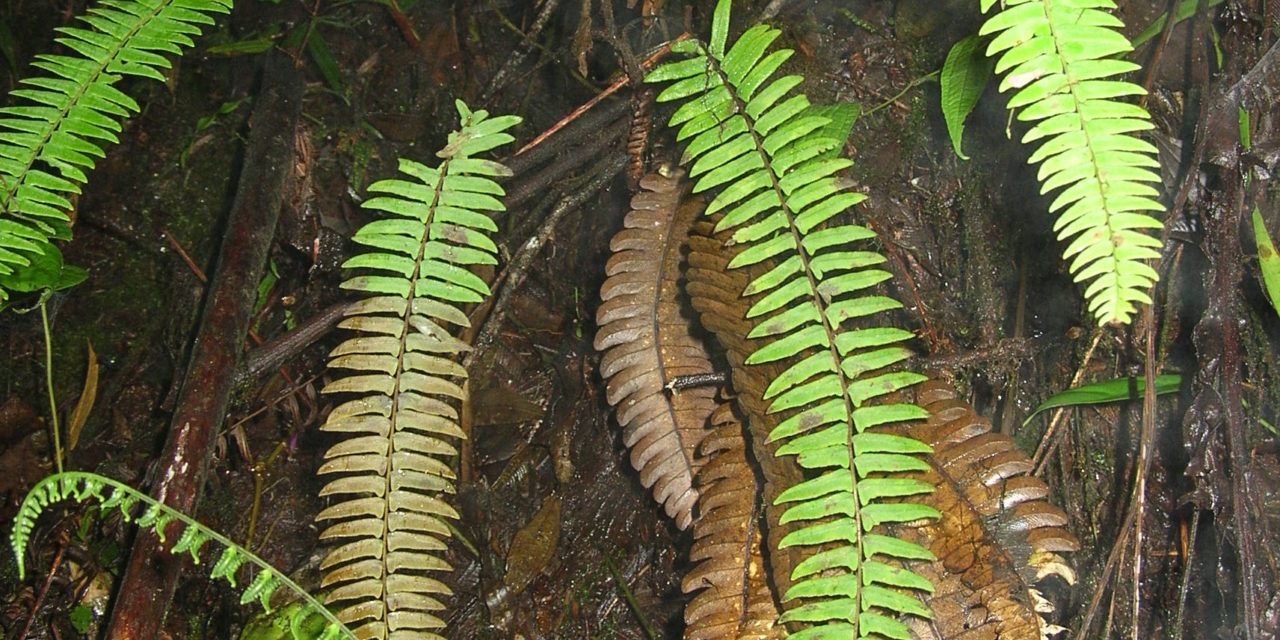
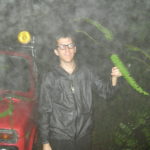
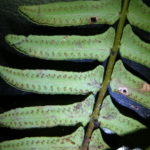
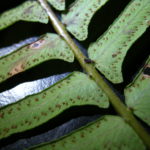
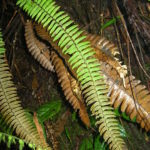
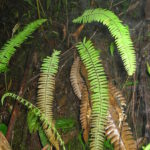

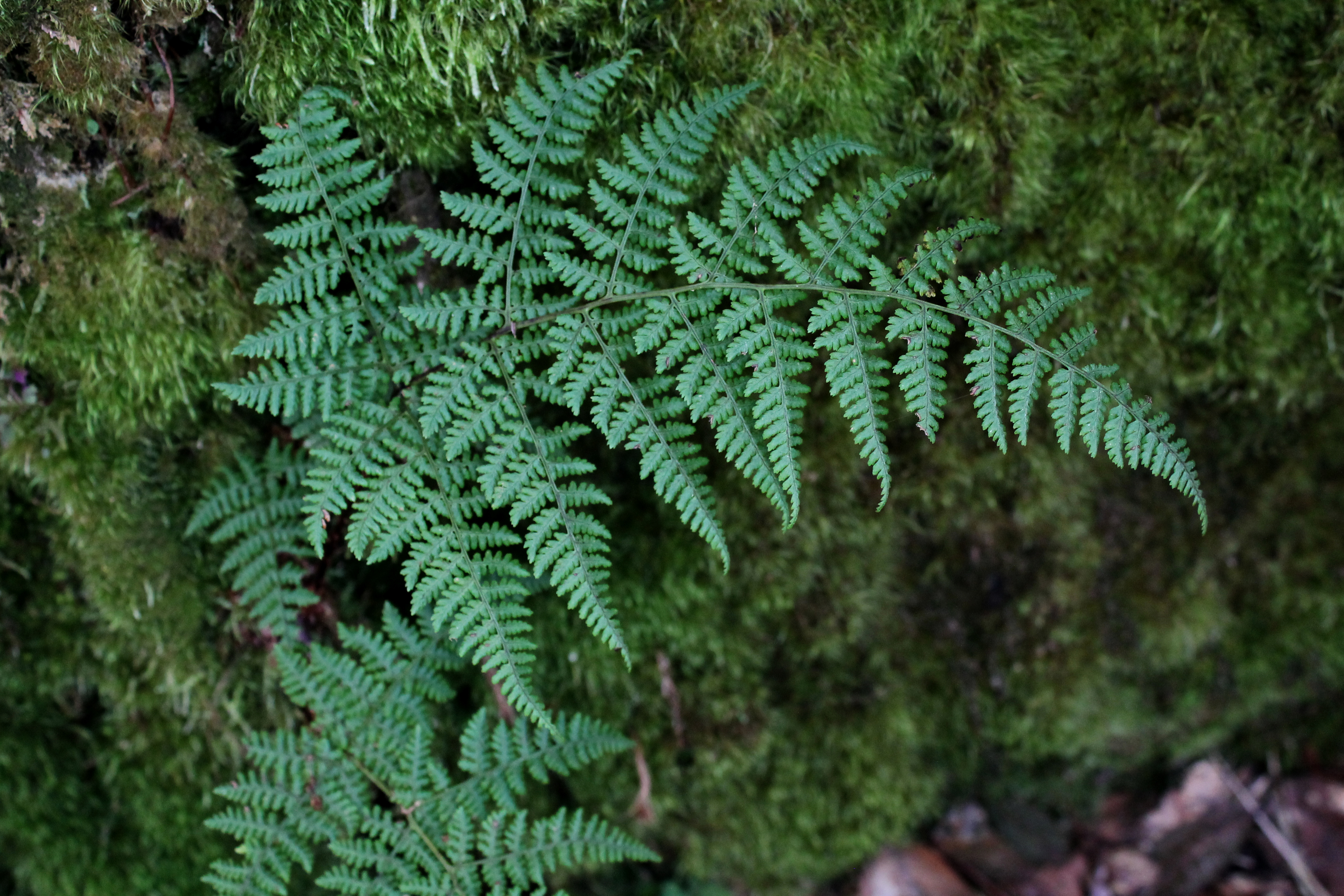
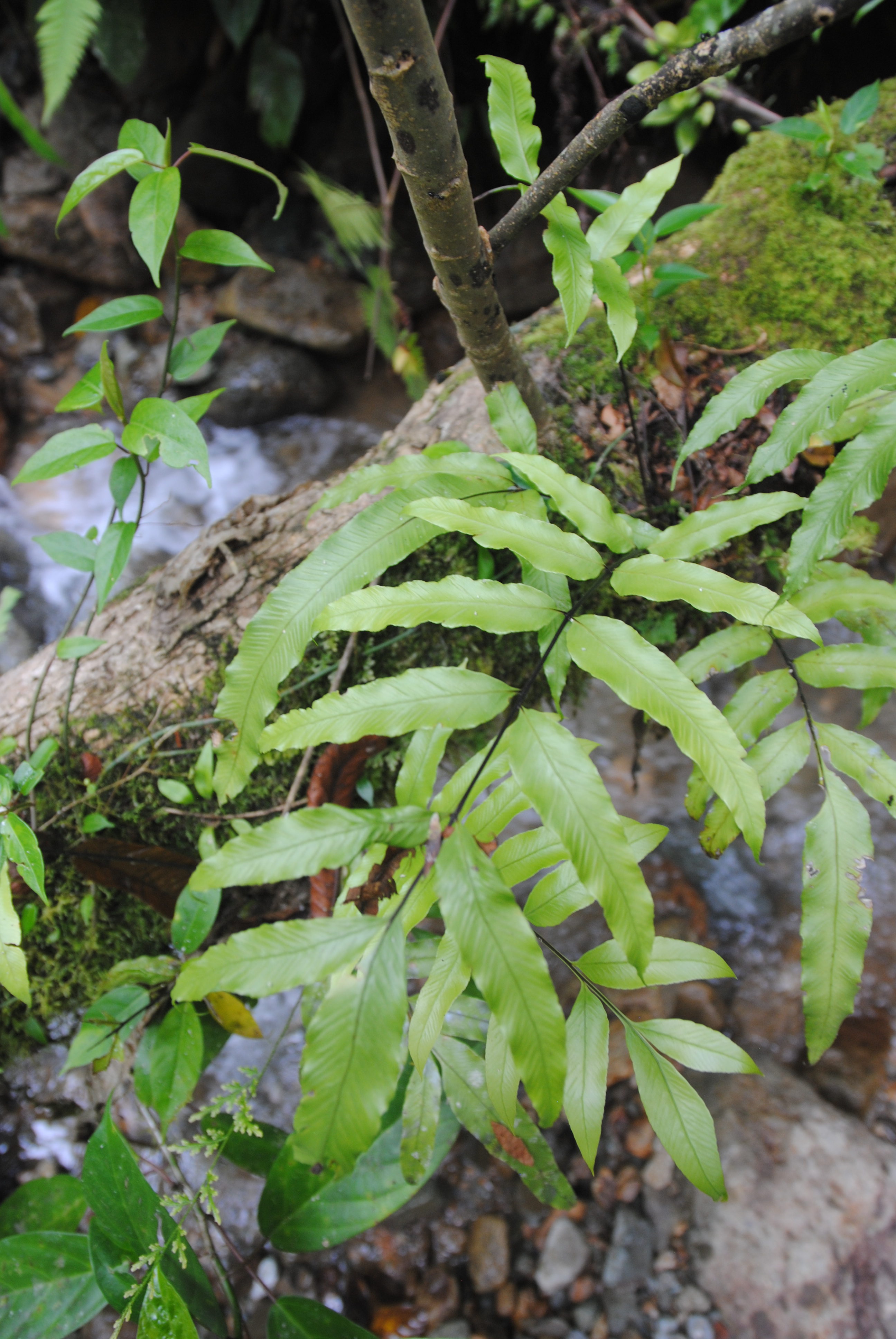
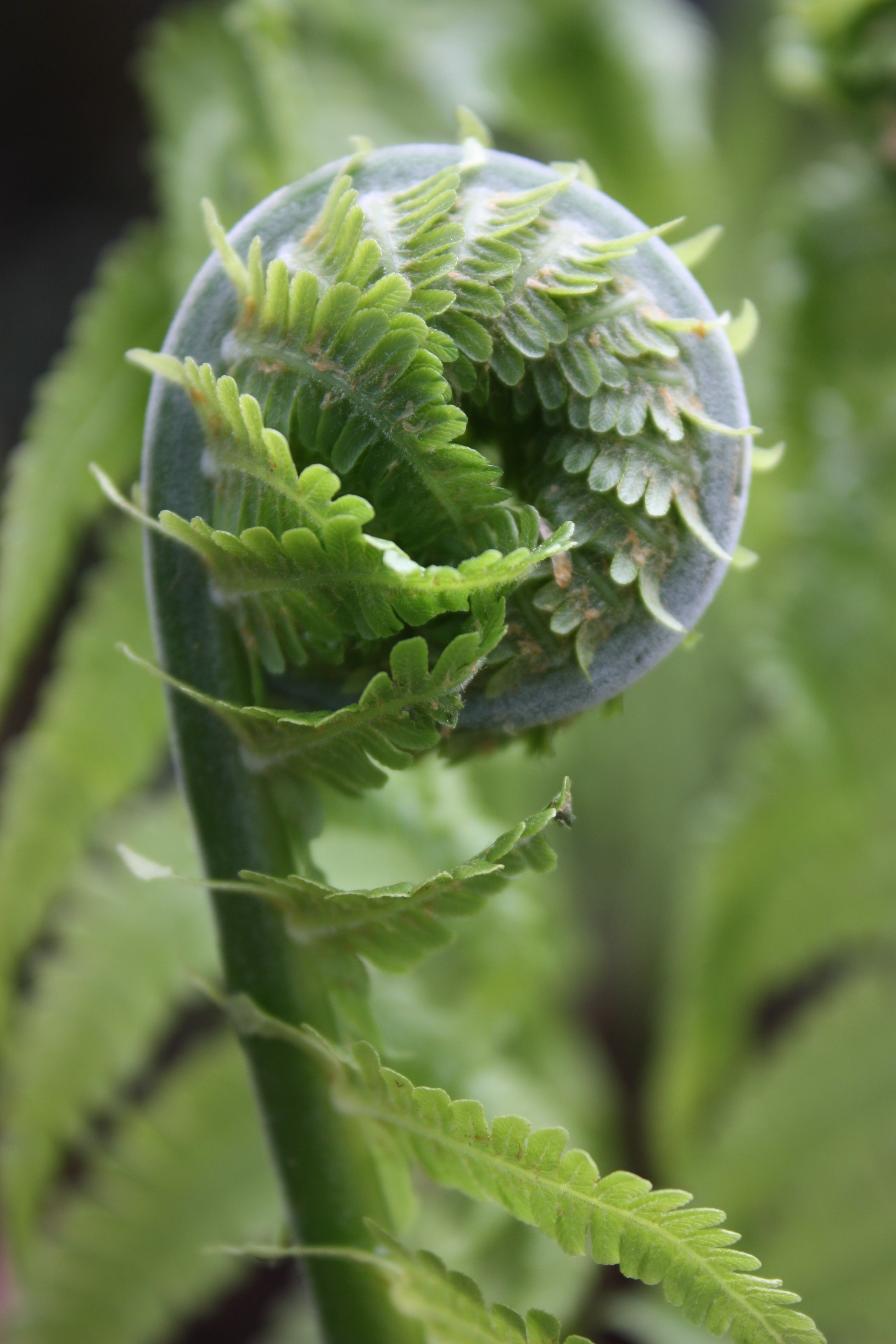
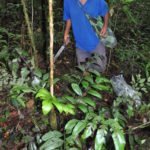
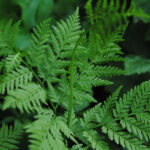
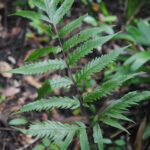
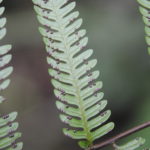
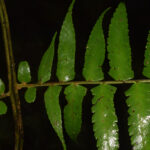
Wow! That is very un-Thelypteris-like, indeed (and awesome too!)… The leaves remind me of a Polystichum, probably because of the acroscopic auricles on the pinnae.
By the way, did you find this species at night?
It was the end of the day, but its not that dark. The flash is reflecting off of the rain which affects the exposure and makes it look like its dark out.
Ahh…Although it would not surprise me if you had said yes… I’ve seen you collecting gametophytes in the dark before.
Wow….this is an awesome species. What group is this in?
Subg. Amauropelta sect. Amauropelta
Dear Dr. Sundue,
Wow, never has such image of thelypterioids in the Old World. It is rather amazing! I’m so excited to see these wonderful pictures that I have little chance to see.
By the way, how could I also get permission to post my photos here? Or does this website only present ferns from the New World?